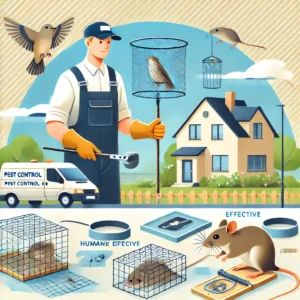
Mice can quickly become a significant nuisance for homeowners in Langley, leading to various problems, from property damage to potential health risks. Effective mice removal Langley involves a combination of prevention, monitoring, and professional intervention. Understanding these methods can help homeowners tackle infestations efficiently.
Identifying signs of a mouse problem early is crucial. Droppings, gnawed materials, and nests can indicate their presence. Homeowners should take immediate action to address these issues to prevent further complications.
Professional pest control services offer tailored solutions for removing mice and ensuring homes remain rodent-free. By employing safe and effective techniques, they provide peace of mind to residents seeking a long-term resolution to their mouse issues.
Understanding Mice Infestation in Langley
Mice infestations can pose significant challenges for residents in Langley. Recognizing the signs of an infestation and understanding the associated health risks are essential for effective management.
Identifying Signs of Mice in Your Home
Residents should watch for specific indicators of mice presence. Common signs include:
- Droppings: Small, dark pellets often found near food sources or along walls.
- Gnaw Marks: Distinctive signs on food packaging, furniture, or wires indicate mice are chewing.
- Nests: Built from shredded materials, these can often be found in hidden areas like attics or basements.
- Noises: Scratching sounds at night can be a telltale sign of mice moving about.
Regular checks in kitchens and storage areas can help detect these signs early, allowing for prompt action.
Health Risks Associated With Mice
Mice can carry various diseases harmful to humans. Key health risks include:
- Hantavirus: Contracted through contact with mouse droppings or urine, this virus can cause severe respiratory issues.
- Salmonella: Mice can contaminate food items with bacteria, leading to serious gastrointestinal illness.
- Leptospirosis: This disease spreads through contact with water contaminated by mouse urine and can cause liver and kidney damage.
Maintaining a clean living environment and sealing entry points reduces the risk of infestation and associated health threats. Regular pest control measures are advisable to keep mice at bay.
Effective Mice Removal Strategies
Mice removal requires an approach that combines prevention, professional services, and post-removal care. Implementing these strategies can ensure a comprehensive solution to a mice infestation.
Preventive Measures to Deter Mice
Effective prevention starts with identifying potential entry points around a property. Common entry points include:
- Gaps in doors and windows
- Cracks in foundation walls
- Holes around utility lines
Sealing these gaps with materials like silicone, steel wool, or expanding foam can significantly reduce the chances of mice entering. Maintaining a clean environment is essential. Regularly check for food sources by storing food in airtight containers and promptly cleaning up spills or crumbs.
Additionally, keeping the yard tidy by trimming overgrown vegetation and securing trash bins can limit outdoor nesting opportunities. Using natural deterrents like peppermint oil may discourage mice from approaching the home.
Professional Mice Extermination Services
When prevention fails, professional services can provide effective mouse extermination. Pest control experts use a variety of methods tailored to the severity of the infestation.
They typically employ:
- Trapping: Humane traps to capture rodents.
- Baiting: Using rodenticides in areas inaccessible to pets and children.
- Fumigation: For severe infestations requiring a more extensive solution.
Professionals assess the property and provide a customized plan that includes recommendations for ongoing pest management. They understand the behavior of mice and can identify and eliminate nests that may not be visible to homeowners.
Post-Removal Sanitation and Repair
After mice have been removed, addressing areas contaminated by droppings, urine, or nesting materials is crucial. Cleaning should include using disinfectants rated for rodent droppings to prevent health risks. It is vital to wear gloves and a mask during this process.
Repairs to compromised areas should follow sanitation efforts. Sealing entry points identified during the extermination phase ensures that mice do not return. This may involve:
- Patchwork for walls
- Repairing damaged screens
- Reinforcing vents
Regular inspections and maintenance can help sustain a rodent-free environment. By following these steps, homeowners can manage the risk of future infestations effectively.
Vaishno Devi Helicopter Ticket Price: A Comprehensive Guide for Pilgrims
Vaishno Devi is one of the most revered pilgrimage sites in India, attracting millions of …